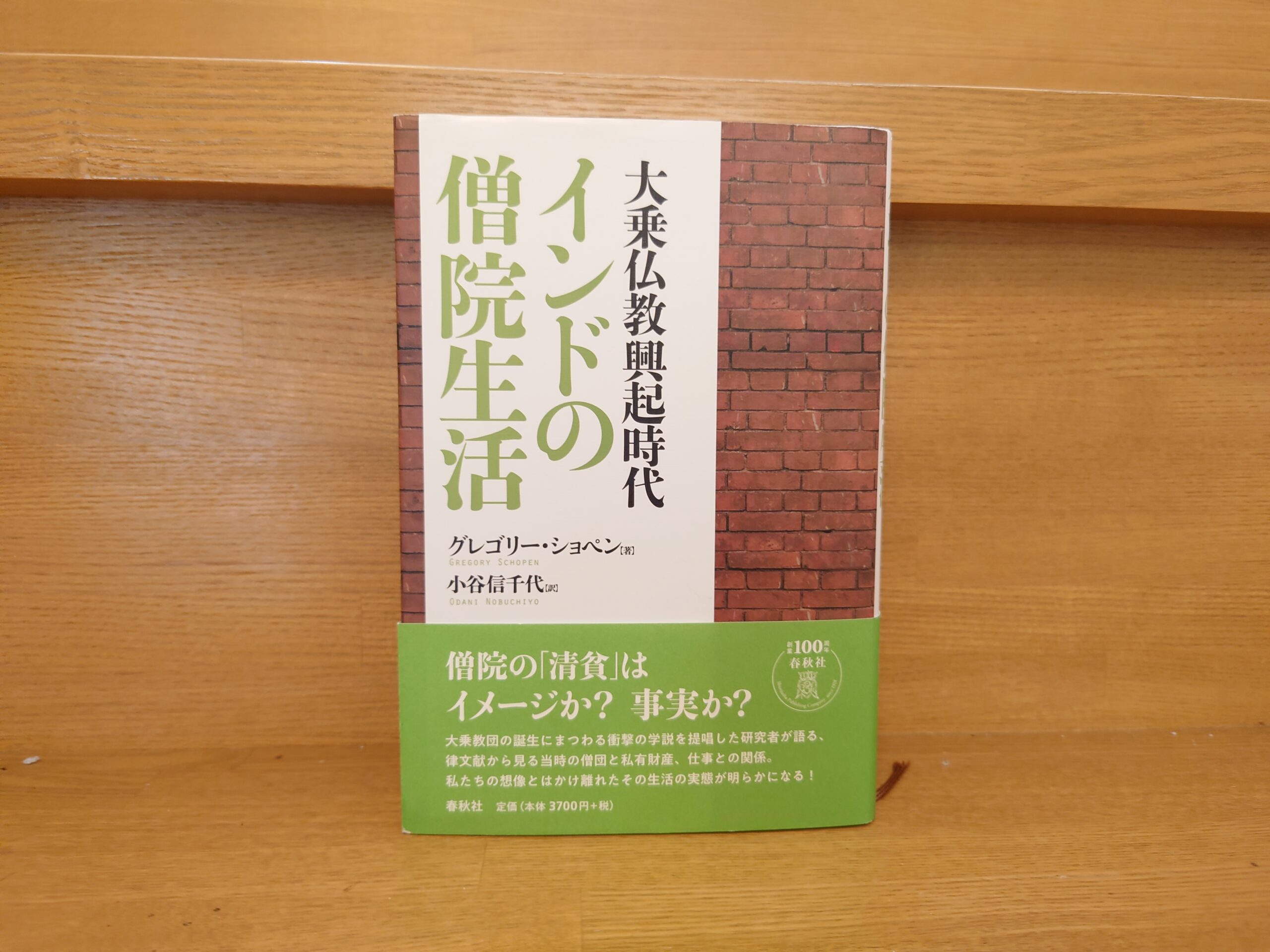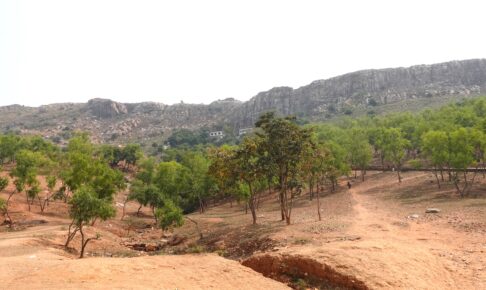Summary and Comments on G. Schopen's "The Rising Age of Mahayana Buddhism: Monastic Life in India" - A shocking theory that overturned the theory of the origin of Mahayana stupas! What is the actual state of Indian Buddhism?
I would like to introduce to you the book "The Rise and Fall of Mahayana Buddhism: Monastic Life in India" written by Gregory Schopen and translated by Nobujiro Kotani, published by Shunju-sha in 2000. I read the first printing of the new edition in 2018.
Let's take a quick look at the book.
In India, Mahayana scriptures were produced until the 4th century, but there was no Mahayana cult! This is a reprint of the famous book by the proponent of a theory that shocked the world's academic world, which brings into sharp relief the image of monasteries that were far from "pure and poor" at that time.
Is "poverty" in monasteries an image or a fact? Fact? The researcher who proposed the shocking theory about the birth of the Mahayana Order talks about the relationship between the monks, their private property, and their work as seen in the Ritsu literature of the time. The reality of their lives, far from our imagination, is revealed!
AmazonProducts Page.
My interest in the author, Gregory Schopen, was previously mentioned on this blog.A History of Buddhism in New Asia 02 India II: The Formation and Development of Buddhism.was the catalyst.
In this work, Gregory Schopen's theory was introduced, and I was so struck by it that I picked up this book, hoping to read Schopen's book.
This book is based on the transcript of a special graduate seminar given by Schopen in 1996 and 1997 at Otani University. The translator's foreword describes the lectures as follows
It is a common understanding in Indian Buddhist history that the period from the first or second century to the fourth or fifth century A.D. was a time when Mahayana Buddhism flourished, surpassing the established sectarian Buddhism (Hinayana Buddhism). Did Mahayana Buddhism really have such a powerful presence in India at that time? Professor Schopen's lecture questioned this established theory of Indian Buddhist history. This is a theme that Professor Schopen has consistently pursued, and the results have been published in a number of excellent articles and books.
The professor's arguments, backed up by his research achievements, attracted a large audience at his public lectures, and his special seminar classes were always enjoyed by around 50 students, including those from other universities. His lectures, based on his unique methodology of introducing inscriptional research and archaeological research methods into the study of the canonical texts, were always stimulating, presenting new findings almost every time, blinding us, the audience, and arousing our intellectual curiosity.
Shunjyu-sha, Gregory Schopen, The Age of the Rise of Mahayana Buddhism: Monastic Life in India, translated by Nobuichiro Kotani, p. ii-ii
His lectures, based on his unique methodology of introducing inscriptional and archaeological research methods to the study of the canon, were always stimulating, with new findings almost always dazzling us and arousing our intellectual curiosity."
That's exactly right! As I read this book, more and more amazing facts appear before my eyes. You will find yourself saying, "What? That's right!" You can't help but be surprised. You will listen to very exciting and thrilling lectures in this book.
The "Translator's Afterword" at the end of the book summarizes this as follows
As you will see, in this lecture, the professor's interest is no longer limited to the debate on the origins of Mahayana Buddhism, but is directed toward clarifying as concretely as possible the state of the Buddhist cult and the reality of monastic life in the period between the first and fourth or fifth centuries, based on the "Fundamental Theory of All Yobudharma," a book of precepts of one of the schools of the Lesser Vehicle. The description of the law that the professor introduces is based on a book of precepts of one of the schools of the Mahayana. In the description of the Ritsu presented by the professor, we find a picture of the monks that is quite different from what we would expect. Monks are usually thought of as having no personal possessions other than the bare necessities such as three robes, a bowl, a water filter bag, and sitting gears. In fact, however, the professor's lectures revealed that the monks owned a considerable amount of personal property, including some very expensive ornaments. It was also revealed that the monks, who were supposed to spend most of their time studying and meditating, were in fact engaged in a wide variety of work inside and outside the monastery, from supervising construction to dog care to even a financial business. We, the participants, were amazed each time as the monks' very human nature was introduced.
Shunju-sha, Gregory Schopen, translated by Nobuichiyo Kotani, The Age of the Rise of Mahayana Buddhism: Monastic Life in India, p. 307-308.
As described here, Schopen's new research has revealed a world that had not been visible in previous literature-centered Buddhist studies. In this book, you will hear the exciting story of Schopen, who has opened up such a new frontier in Buddhist studies.
Mahayana Buddhism arose in criticism of the Lesser Vehicle Buddhism from the post-A.D. period, became a major force, and eventually came to Japan via China. We tend to think of Mahayana Buddhism in these terms, but it is a surprising fact that there is no evidence that the Mahayana cult itself existed until the 5th or 6th century. Although the Mahayana scriptures themselves date from the first century A.D., there is no evidence of the existence of a separate Mahayana cult from the Small Vehicle cult.
What do you mean there is a scripture but no cult?" You may be wondering, "How is it that there is a scripture but no cult? I was wondering the same thing.
But Schopen vividly reveals how it works in this book. I can honestly say that I am shocked.
I wish I could introduce the theory in this article, but it would be too long, and introducing only fragments might make it difficult to understand.
I hope you will read this book and see what it has to say. It is a very interesting book. It is a great book that you should definitely buy. It is a book that will have a tremendous impact on your study of Buddhism.
For an overview of Schopen's theory and its subsequent impact on Buddhist academia, seeSeries on Mahayana Buddhism, Volume II: The Birth of Mahayana Buddhism.We recommend that you read it together with the detailed explanation in the following section.
This was a tremendous book. I would highly recommend this work. It has such an impact that it will change your image of Indian Buddhism and Mahayana Buddhism. I highly recommend you to pick up a copy.
The above is "G. Schopen, "Monastic Life in India during the Rise of Mahayana Buddhism" - A shocking theory that overturned the theory of the origin of Mahayana stupas! What Indian Buddhism actually was!" The above is "G. Schopen, Monastic Life in India during the Rise of Mahayana Buddhism.
Next Article.
Click here to read the previous article.
Related Articles





































